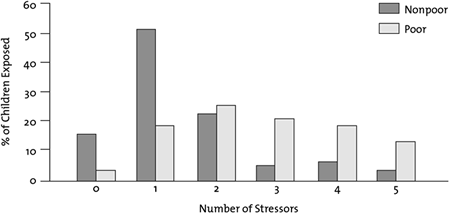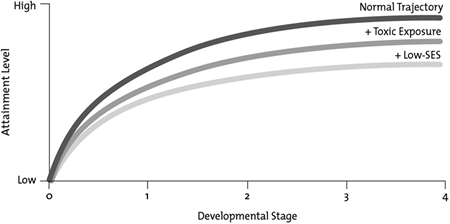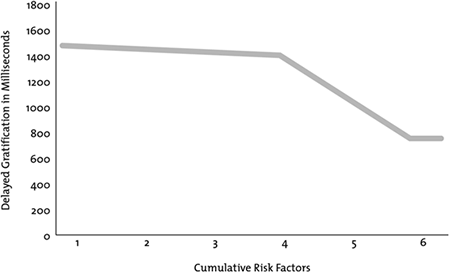
Primary, Cognitive, and Affective Characteristics of Children with Learning Disabilities
-
Academic Difficulties
-
The primary characteristic of students with learning disabilities is underachievement in one or more academic areas, resulting in the uneven development of academic skills.
-
-
Cognitive Skill Deficits
-
Students with learning disabilities are often characterized by certain cognitive problems that contribute to the difficulties they have learning academic content. One of the most frequently noted problems among students with learning disabilities is a memory deficit. Many students with learning disabilities have difficulty with long-term memory and experience great frustration in attempting to learn basic information and rapidly retrieving this information during school activities. For example, many students with learning disabilities who have problems with math have difficulty learning math facts. Moreover, they may remember facts one day and forget them the next. Much the same can be said about learning to spell for a significant number of students with learning disabilities.
-
-
Attention Problems
-
A second cognitive factor that may contribute to many learning disabilities is attention problems. Available evidence suggests that as many as 60% of students with learning disabilities have some level of attentional difficulty (Rock, Fessler, & Church, 1999).
-
-
Metacognitive Deficits
-
Students with learning disabilities may also have difficulty with what are called metacognitive skills. Metacognition relates to an awareness of thinking processes and how these processes are monitored.
-
-
Social and Motivational Problems
-
While not all students with learning disabilities have social-skills deficits, research has revealed that some do manifest difficulties getting along with peers and teachers as a result of deficits in this area. For example, some students with learning disabilities lag behind others in social skills: They have difficulty helping others, accepting authority, and expressing feelings (Bender, 1999; Vaughn, LaGreca, & Kuttler, 1999).
-
Why and How Socioeconomic Status Impacts Studnet Academic Performance
Children raised in poverty rarely choose to behave differently, but they are faced daily with overwhelming challenges that affluent children never have to confront, and their brains have adapted to suboptimal conditions in ways that undermine good school performance. Emotional and social challenges, acute and chronic stressors, cognitive lags, and health and safety issues play a big part in a student's academic performance.
-
Emotional and Social Challenges
-
Many low-SES children face emotional and social instability. Typically, the weak or anxious attachments formed by infants in poverty become the basis for full-blown insecurity during the early childhood years. Very young children require healthy learning and exploration for optimal brain development. Unfortunately, in impoverished families there tends to be a higher prevalence of such adverse factors as teen motherhood, depression, and inadequate health care, all of which lead to decreased sensitivity toward the infant and, later, poor school performance and behavior on the child's part.
-
-
Acute and Chronic Stressors
-
Stress can be defined as the physiological response to the perception of loss of control resulting from an adverse situation or person. Occasional or "roller-coaster” stress is healthy for all of us; it supports our immune function and helps develop resiliency. However, the acute and chronic stress that children raised in poverty experience leaves a devastating imprint on their lives. Acute stress refers to severe stress resulting from exposure to such trauma as abuse or violence, whereas chronic stress refers to high stress sustained over time. Low-SES children are more subject to both of these types of stress than are their more affluent peers, but chronic stress is more common and exerts a more relentless influence on children's day-today lives. Children living in poverty experience significantly greater chronic stress than do their more affluent counterparts. This kind of stress exerts a devastating, insidious influence on children's physical, psychological, emotional, and cognitive functioning—areas that affect brain development, academic success, and social competence. Students subjected to such stress may lack crucial coping skills and experience significant behavioral and academic problems in school.
-
-
Cognitive Lags
-
Cognitive ability is highly complex. It can be measured in many different ways and is affected by numerous factors, not least of which is socioeconomic status. Socioeconomic status is strongly associated with a number of indices of children's cognitive ability, including IQ, achievement tests, grade retention rates, and literacy. There is a gulf between poor and well-off children's performance on just about every measure of cognitive development, from the Bayley Infant Behavior Scales to standardized achievement tests. The correlations between socioeconomic status and cognitive ability and performance are typically quite significant and persist throughout the stages of development, from infancy through adolescence and into adulthood. But these are data, not destiny. The good news is that brains are designed to change.
-
-
Health and Safety Issues
-
Low-SES children are often subject to such health and safety issues as malnutrition, environmental hazards, and insufficient health care. Health and achievement overlap: every cell in our body needs a healthy environment to function optimally. When a body's cells are besieged daily by stressors, they slow their growth trajectory and contract. Kids raised in poverty have more cells in their body "under siege” than do kids from middle- or upper-income families. The consequent adaptations that these kids' immune systems make diminish their ability to concentrate, learn, and behave appropriately.
-
Effects on School Behavior and Performance
-
The greater incidence of health issues among lower-income students leads to increased
-
School absences.
-
Duration of school absences.
-
Tardiness rates.
-
Incidents of illness during class.
-
Rates of undiagnosed and/or untreated health problems or disabilities.
-
-
-
Mainstreaming and Inclusion
Mainstreaming means including a student with disabilities in a general education class as long as he/she can perform similar work to his/her non-disabled peers. This might be Art, Music, PE in the old days.Inclusion means that students with disabilities are educated based on their own unique learning needs in classes of students with and without disabilities.Mainstreaming is still all too common in schools. Some classroom teachers *call it* inclusion, but still expect the student with disabilities to be in their classroom *only* if they can keep up with the same workload.
Inclusion vs. Full Inclusion
Inclusion is a term which expresses commitment to educate each child, to the maximum extent appropriate, in the school and classroom he or she would otherwise attend. It involves bringing the support services to the child (rather than moving the child to the services) and requires only that the child will benefit from being in the class (rather than having to keep up with the other students). Proponents of inclusion generally favor newer forms of education service delivery. Full inclusion means that all students, regardless of handicapping condition or severity, will be in a regular classroom/program full time. All services must be taken to the child in that setting.
Educational Placements of Students With Disabilities
Part B of IDEA and its implementing regulations require "that, to the maximum extent appropriate, children with disabilities, including children in public and private institutions and other care facilities, should be educated with children who are not disabled; and that special classes, separate schooling, or other removal of children with disabilities from the regular educational environment occurs only when the nature and severity of the disability is such that education in regular classes with the use of supplementary aids and services cannot be achieved satisfactorily" (34 CFR 300.550). The Part B regulations further specify that "a continuum of alternative placements is available to meet the needs of children with disabilities for special education and related services" (34 CFR 300.551).
Each year, OSEP collects data from States and Outlying Areas on the number of students with disabilities served in each of six different educational environments: regular class, resource room, separate class, public or private separate school, public or private residential facility, and homebound/hospital placements. The data are collected by age group for students age 3 through 21 and by disability for students age 6 through 21.
-
Regular class includes students who receive the majority of their education program in a regular classroom and receive special education and related services outside the regular classroom for less than 21 percent of the school day. It includes children placed in a regular class and receiving special education within the regular class, as well as children placed in a regular class and receiving special education outside the regular class.
-
Resource room includes students who receive special education and related services outside the regular classroom for at least 21 percent but not more than 60 percent of the school day. This may include students placed in resource rooms with part-time instruction in a regular class.
-
Separate class includes students who receive special education and related services outside the regular classroom for more than 60 percent of the school day. Students may be placed in self-contained special classrooms with part-time instruction in regular classes or placed in self-contained classes full-time on a regular school campus.
-
Separate school includes students who receive special education and related services in separate day schools for students with disabilities for more than 50 percent of the school day.
-
Residential facility includes students who receive education in a public or private residential facility, at public expense, for more than 50 percent of the school day.
-
Homebound/hospital environment includes students placed in and receiving special education in hospital or homebound program.
Least Restrictive Environment and the Implementation
Least Restrictive Environment (LRE) is the requirement in federal law that students with disabilities receive their education, to the maximum extent appropriate, with nondisabled peers and that special education students are not removed from regular classes unless, even with supplemental aids and services, education in regular classes cannot be achieved satisfactorily.
Digital Platforms
-
Blended Learning
-
Blended courses (also known as hybrid or mixed-mode courses) are classes where a portion of the traditional face-to-face instruction is replaced by web-based online learning.
-
-
Virtual or online Learning
-
A virtual learning environment (VLE) is a Web-based platform for the digital aspects of courses of study, usually within educational institutions. VLEs typically: allow participants to be organised into cohorts, groups and roles; present resources, activities and interactions within a course structure; provide for the different stages of assessment; report on participation; and have some level of integration with other institutional systems.
-
-
Full-time Online Learning
-
The learning is all done through an online resource. The students rely solemnly on the internet to learn the information.
-
-
Open Educational Resources
-
Open Educational Resources (OERs) are any type of educationalmaterials that are in the public domain or introduced with an openlicense. The nature of these open materials means that anyone can legally and freely copy, use, adapt and re-share them.
-
Assignment 2 - Creating Responsive Learning




